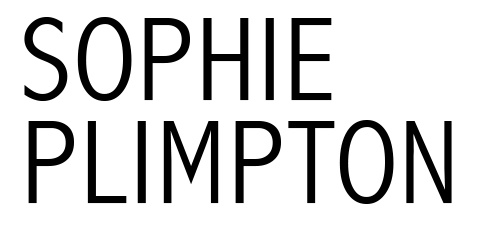-
On November 10, 2011
TEXTURE THE FRAME
November 10th – November 16th, 2011
FOR IMMEDIATE RELEASE
The Rogue Space
526 West 26th Street
New York, NY
10001
Opening Reception
November 10th, 2011
6-9 pm
Independent curator Sophie Plimpton is pleased to announce the opening of “Texture The Frame” at The Rogue Space featuring Alison Nguyen, Karen Dana, Pierre Fraiture, Frances Denny, and Jean Fauteuille. The show will run from November 10th – November 16th at The Rogue Space, 526 West 26th Street, in New York City. The opening will include our performance artist Coco Karol along with musician and collaborator, Marcos Zotes to be filmed by video artist, Azmi Mert Erdem.
What unites the artists of “Texture The Frame” is their ability to captivate the viewer through their medium by exploring the boundaries of the frame. Each artist plays with material, provoking thought on texture; it’s substance, and edges. Engaging this in detail, the artists call into question the use of the frame as a literal mode of presentation, as the boundary of a medium, and narrative. They further create a dialogue providing insight into their processes. The exhibition showcases their compelling abilities to engage the viewer by compelling* multiple sensations. A tête-à-tête with the performance art piece provides insight into the way in which the artists have addressed the frame, it’s layers and subsequent substance. While the artists’ approaches to the frame are varied, the pieces and their immediacy create a strong sense of connectivity. The pieces render their subjects current and fresh, emphasizing process and presence lending an element of intensity. Alison Nguyen, Karen Dana, Pierre Fraiture, Frances Denny, Jean Fauteuille, Coco Karol and Marcos Zotes take us to the wilder shores of imagination casting their nets wide.
Alison Nguyen’s panoramic prints, which are composed of multiple exposures made inside a plastic camera reveal overlapping scenes; flickers; faces, shadows, and shades of color which merge in and out of abstraction. Nguyen’s images are marked by the their translucency, scratches, light leaks, and transformations. Her portraits created using hand-applied emulsions of salt printing and platinum printing have gestural painterly elements. From photographic markings made with light to targets riddled by bullet holes, Nguyen’s work calls attention to undefined absences and presences. The gunshots that have passed through Nguyen’s targets are lost and yet their residue takes on a life of its own. Key to all of Nguyen’s artwork is the idea of the Trace. What is inside each of Nguyen’s “frames” evokes the fantasy of that which is outside of them. Nguyen creates open narratives inviting viewers to be participants in the creative act.
Karen Dana’s paintings weave elements of human relationships in their closeness and isolation. The combination of materials creates both synthesis and disjuncture. Her pieces are imbedded with psychologically charged formations as she reveals the distance present even in intimacy. She creates visual tension, and highlights the natural voids in between people. Karen Dana uses shadows to outline the silhouettes of a couple in “Embrace”, meanwhile subtly hiding an alarming hue on the lower side of the partner work. The clay finger press sculpture in “Come Closer” invites an intimate observation of the layers and gestural qualities imbued in her work.
Frances Denny’s pieces entitled “Ponderosa Pines,” “Escape Artist,” and “The Net” deal with the presence of texture in nature. In these images, she portrays the encroachment of humankind on the environment, as well as the closely-knitted ways that natural imagery is both appropriated and ignored. Her ability to encapsulate a quiet but subsequently charged set of themes pushes the viewer to see the singular way that the natural world is overlooked, condoned, or re-assigned to mankind’s purposes. In framing her photographs, she also pinpoints the complicated co-dependence of this relationship.
Jean Fauteuille’s sculpture incorporates Source code, and Morse code in the text while combining painting and drawing with collage. The piece titled “Code” fittingly appears impenetrable as it stands in a Plexi box, encouraging the viewer to take a closer look at details like a tuft of hair collated by black paint. The form of the center canvas is that of a sun with jutting rays, and yellow threads hang down bringing another textural element to the “Code”. The thin gestural ink drawings, which are highly detailed in contrast to the thick blunt marks on other sections of the sculpture experiment with styles showing old figures recycled with alternative found materials. Jean Fauteuille creates an explorative object inviting the viewer to read the text and symbols.
Pierre Fraiture’s paintings evoke the quiet before the storm, as he positions the color palette to excite the viewer. He utilizes Turpentine to create depth of space, and the drips form provoking entities for the eye to explore. The energy and gestural qualities found in Pierre Henri’s work produce vibrant shades. He pinpoints detail in selected areas of the canvas creating further surface depth, and textures the canvas by multiple layering techniques. Pierre Henri’s exuberant works encourage the viewers to experience the energy lifting from the canvas.
The artists in “Texture The Frame” all hold distinctive styles, and create a dialogue. Together they expand the boundaries of the frame through its branches and levels extended out into the realm of interpretation.
